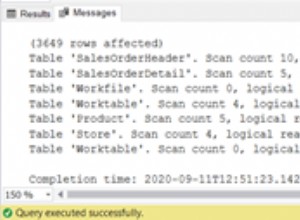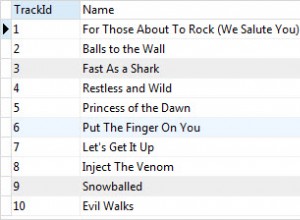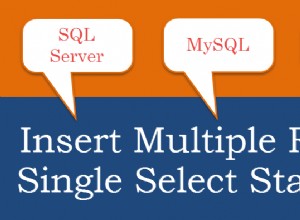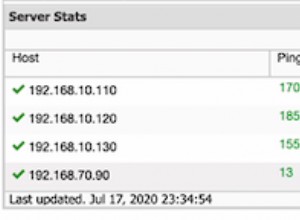Você pode voltar até o irmão do aluno
s_days nó:select h.PlanCodeCode, b.amount, b.pcode, b.child1_amount, b.child2_amount
from t
cross join
xmltable(xmlnamespaces(default 'http://www.w3.org/2001/XMLSchema'),
'/SSO_XML'
passing t.xml
columns PlanCodeCode varchar2(100) path './PlanCode/@PlanCodeCode',
attributes xmltype path './PlanCode'
) h
left join xmltable(xmlnamespaces(default 'http://www.w3.org/2001/XMLSchema'),
'PlanCode/S_DAYS/STUDENT/DIVISION'
passing h.attributes
columns node_level for ordinality
, amount number path '@Amount'
, pcode varchar2(10) path './../../@PCODE'
, child1_amount number path './../../../S_DAYS[@PCODE="Child1"]/AdditonalFare/AdditonalFareAmount/@Amount'
, child2_amount number path './../../../S_DAYS[@PCODE="Child2"]/AdditonalFare/AdditonalFareAmount/@Amount'
) b on 1=1;
Ou você pode obter os filhos da primeira XMLTable, se sempre quiser vê-los, mesmo que não haja nós de alunos:
select h.PlanCodeCode, b.amount, b.pcode, h.child1_amount, h.child2_amount
from t
cross join
xmltable(xmlnamespaces(default 'http://www.w3.org/2001/XMLSchema'),
'/SSO_XML'
passing t.xml
columns PlanCodeCode varchar2(100) path './PlanCode/@PlanCodeCode',
attributes xmltype path './PlanCode',
child1_amount number path './PlanCode/S_DAYS[@PCODE="Child1"]/AdditonalFare/AdditonalFareAmount/@Amount',
child2_amount number path './PlanCode/S_DAYS[@PCODE="Child2"]/AdditonalFare/AdditonalFareAmount/@Amount'
) h
left join xmltable(xmlnamespaces(default 'http://www.w3.org/2001/XMLSchema'),
'PlanCode/S_DAYS/STUDENT/DIVISION'
passing h.attributes
columns node_level for ordinality
, amount number path '@Amount'
, pcode varchar2(10) path './../../@PCODE'
) b on 1=1;
Aliás, como você está no 12c, você pode usar
cross apply e outer apply - o último em vez da junção externa com on 1=1 fictício doença. select h.PlanCodeCode, b.amount, b.pcode, h.child1_amount, h.child2_amount
from t
cross apply
xmltable(xmlnamespaces(default 'http://www.w3.org/2001/XMLSchema'),
'/SSO_XML'
passing t.xml
columns PlanCodeCode varchar2(100) path './PlanCode/@PlanCodeCode',
attributes xmltype path './PlanCode',
child1_amount number path './PlanCode/S_DAYS[@PCODE="Child1"]/AdditonalFare/AdditonalFareAmount/@Amount',
child2_amount number path './PlanCode/S_DAYS[@PCODE="Child2"]/AdditonalFare/AdditonalFareAmount/@Amount'
) h
outer apply xmltable(xmlnamespaces(default 'http://www.w3.org/2001/XMLSchema'),
'PlanCode/S_DAYS/STUDENT/DIVISION'
passing h.attributes
columns node_level for ordinality
, amount number path '@Amount'
, pcode varchar2(10) path './../../@PCODE'
) b;
Qualquer um deles obtém o mesmo resultado com seus dados de amostra:
PLANCODECODE | AMOUNT | PCODE | CHILD1_AMOUNT | CHILD2_AMOUNT
:----------- | -----: | :---- | ------------: | ------------:
CHOICE | 150.05 | P123 | 100 | 130
CHOICE | 250.05 | P123 | 100 | 130
CHOICE | 150.05 | P1234 | 100 | 130
CHOICE | 250.05 | P1234 | 100 | 130
db<>fiddle




